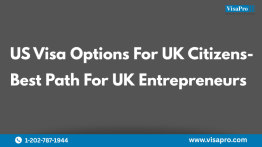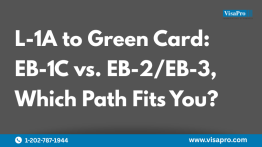Quick Summary:
Yes, non-profit organizations can file L-1 petitions, but the path isn’t straightforward. Success may rely less on traditional ownership (shares) and more on management and control. Without traditional shares or ownership structures found in for-profit organizations, you’ll need to prove management and control through bylaws, board appointments, financial dependency, and operational oversight. Understanding these requirements can make the difference between approval and denial of your international transfer.
Understanding L-1 Petitions for Non-Profit Organizations
Non-profit organizations absolutely can file L-1 petitions to transfer employees from foreign affiliates, but the process requires a different approach than traditional corporate petitions.
The L-1 visa category allows companies to transfer executives, managers, or employees with specialized knowledge from a foreign office to a U.S. location. The regulations, however, also require that there be a “qualifying relationship” between the entity outside the U.S. and the U.S. sponsoring entity. The statute and the regulations define a “qualifying organization” under the L-1 classification as an entity that is the same employer, or a parent, branch, subsidiary, or affiliate of the employer abroad.
For 501(c)(3) organizations, the concept of “ownership” doesn’t exist in the traditional sense. No individual or entity owns shares in a charitable organization. Instead, non-profits are governed by boards of directors or trustees who oversee the organization’s mission and operations. This structural difference initially seems incompatible with L-1 requirements, but immigration regulations recognize control-based relationships that extend beyond stock ownership.
Proving the qualifying relationship between the foreign and U.S. entities demands careful documentation of organizational structure, governance mechanisms, and operational dependencies when “ownership” doesn’t exist.
| Traditional Corporate L-1 | Non-Profit L-1 |
|---|---|
| Can prove relationship through stock ownership (typically 50%+) | Prove relationship through management and control |
| Can utilize share certificates and corporate records | Use bylaws, board resolutions, and governance documents |
| Ownership percentages are straightforward | Control mechanisms must be explicitly documented |
| Less documentation of operational oversight needed | Requires extensive evidence of actual control exercise |
The key distinction lies in understanding that USCIS recognizes various forms of organizational control beyond stock ownership. Your non-profit can successfully demonstrate a parent-subsidiary, branch, or affiliate relationship through bylaws, board composition, funding structures, and management appointments. This article will guide you through every aspect of filing an L-1 petition as a non-profit, drawing on successful case precedents and practical strategies that work.
Proving Management and Control: The Core Requirements
Management and control must be demonstrated through concrete, documentable mechanisms that show the foreign entity’s authority over the U.S. non-profit, vice versa or another entity’s control over both qualifying institutions. USCIS examines multiple factors to determine whether sufficient control exists, and successful petitions typically present evidence across several categories simultaneously.
a. Case Scenario:
- A non-profit “USCharity” is governed by the board of “ForeignParent NGO” which appoints all U.S. board members, reimburses U.S. entity’s costs, and directs the mission and budget. Here, “USCharity” could fairly be considered a subsidiary of “ForeignParent NGO” for L-1 purposes.
- Contrast: If “USCharity” has its own independent board, independent budget and only receives a grant from “ForeignParent NGO” with no oversight, then the control link may be weak.
b. Actionable Suggestion: Pull together governance documents (bylaws, board minutes, funding agreements) that show:
- Appointment/removal rights of the foreign entity over U.S. entity leadership
- Financial dependency or operating cost reimbursement by the foreign entity
- Inclusion in the foreign entity’s financial statements as a subsidiary or dependent organization
Mythbuster: A common misunderstanding is that “lack of shares” automatically disqualifies a non-profit from filing. That’s not true, control, governance, and dependency can serve the purpose of demonstrating the qualifying relationship

Board Composition and Appointment Authority
Board composition represents one of the most powerful indicators of control. If one entity appoints all or most of the other non-profit entity’s board members, this demonstrates direct governance authority. Bylaws that explicitly grant appointment power to the controlling organization create a clear control mechanism that USCIS readily recognizes.
Executive Appointment and Removal Powers
Executive appointment authority provides another critical element. When one entity has the power to appoint and remove the other organization’s president, CEO, or other executive officers, this shows operational control over day-to-day management. The ability to remove executives is particularly significant because it demonstrates that ultimate authority rests with the parent entity.
Example: Bylaw provisions stating that the President and Executive Officer of the U.S. non-profit must be appointed by the CEO of the foreign parent, and that only the foreign CEO could remove these officers. These provisions leave no doubt about where ultimate authority resides. When drafting or amending your non-profit bylaws, work with both corporate counsel and immigration attorneys to ensure the language clearly establishes the control relationship while maintaining compliance with state non-profit laws.
Financial Dependency and Control
Financial dependency often provides compelling evidence of control. If the non-profit in one country receives the majority of its funding from the parent entity, or if the one entity must approve the other organization’s budget and major expenditures, this indicates substantial control. Financial statements showing regular transfers from the “parent”, grant agreements requiring parent approval, and budgetary oversight mechanisms all contribute to proving the qualifying relationship.
Operational Oversight and Strategic Direction
Operational oversight through reporting requirements, strategic planning authority, and program approval processes further strengthens your case. If one of the non-profit entities must report regularly to their parent, seek approval for new programs or initiatives, or coordinate its activities with the parent or affiliate entity’s strategic objectives, these factors demonstrate ongoing management control.
Documentation of these relationships through meeting minutes, approval letters, strategic plans, and coordination agreements provides tangible evidence of the parent-subsidiary relationship. The key is showing that control isn’t merely theoretical but actively exercised in the organization’s day-to-day operations and long-term planning.
The SWAN Case Study: A Blueprint for Non-Profit L-1 Success
The SWAN case provides an excellent model for how non-profits can successfully establish qualifying relationships for L-1 petitions. SWAN-US, a 501(c)(3) charitable organization, operated as a subsidiary of Barron International UK, which employed an L-1B beneficiary. Despite having no traditional share ownership, the petition succeeded by demonstrating comprehensive management and control.
| Evidence Category | What SWAN Provided | Impact |
|---|---|---|
| Public Corporate Records | Barron International UK’s Annual Report listing SWAN-US as subsidiary (Note 20, page 60 of 2016 Financial Statements) | Public acknowledgment of relationship in official documents |
| Financial Statements | SWAN-US statements showing majority contributions granted to parent and dependency for operating cost reimbursement | Two-way financial relationship proving integration |
| Bylaw Provisions | All Directors appointed by foreign Board of Trustees (Article IV, Section 2) | Clear governance control |
| Executive Appointments | President/Executive Officer appointed by foreign CEO (Article V, Sections 6 & 7) | Day-to-day operational control |
| Removal Authority | Only foreign CEO can remove President/Executive Officer (Article V, Section 3) | Ultimate authority with foreign parent |
The SWAN petition succeeded because it presented multiple, reinforcing streams of evidence. No single factor proved the relationship; rather, the combination of public acknowledgment, financial integration, and governance authority created an overwhelming case for the qualifying relationship.
The first element of proof came from public corporate documentation. When your foreign parent organization publishes annual reports, financial statements, or other public documents, ensure they clearly identify the U.S. non-profit as a subsidiary or affiliate. This public acknowledgment carries significant weight because it shows the foreign parent openly claims the U.S. organization as part of its corporate family.
Financial dependency provided the second major pillar. Your petition should include financial statements, grant agreements, and funding documentation that illustrate similar dependencies. The two-way nature of SWAN’s financial relationship was particularly compelling; it wasn’t just receiving funds but also supporting the parent’s mission.
The bylaws delivered the most definitive proof of control, with specific provisions leaving no doubt about where ultimate authority resided. This multi-layered approach should guide your own petition strategy, gathering documentation across all available categories of evidence.
Essential Documentation for Non-Profit L-1 Petitions
Building a successful non-profit L-1 petition requires assembling comprehensive documentation that proves the qualifying relationship and the beneficiary’s qualifications. Start by gathering all organizational governance documents for both entities. This includes articles of incorporation, bylaws, board resolutions, and any amendments to these documents. Your bylaws are particularly critical. they should explicitly address board appointment authority, executive appointment and removal powers, and any other governance mechanisms that demonstrate control.
Financial documentation must show the relationship between the organizations. Provide audited financial statements for both the foreign and U.S. entities covering at least the past two to three years. Include notes to financial statements that explain relationships between the organizations, funding flows, or operational dependencies. If the U.S. non-profit receives grants or contributions from the foreign entity, include grant agreements, funding letters, and wire transfer documentation. Tax returns (Form 990 for U.S. non-profits) should also be included, as they provide independent verification of financial information and organizational structure.
Board meeting minutes and resolutions provide evidence of ongoing control and communication between the entities. Include minutes that show board appointments, executive appointments, strategic decisions referred to the foreign parent for approval, or coordination of programs and activities. These documents demonstrate that control isn’t merely theoretical but actively exercised. If board members from the foreign entity serve on the U.S. board or vice versa, or if representatives regularly attend meetings, document this participation.
Organizational charts and Organograms for both entities should clearly illustrate the relationship, showing how the qualifying non-profit entities fit within the global organizational structure. Include descriptions of reporting relationships, noting which positions report to any foreign executives, if applicable, or vice versa, and how information flows between the organizations. If the beneficiary currently holds a position in the foreign entity, show their current role and how it relates to the proposed U.S. position.
Annual reports, strategic plans, and program descriptions help demonstrate integration and coordination. If the parent entity’s annual report mentions the subsidiary or affiliate entities, this provides powerful evidence of the relationship. Strategic planning documents that show coordination between the entities, or program descriptions that illustrate how the U.S. non-profit advances the foreign parent’s mission, further strengthen your case.
L-1A vs. L-1B: Choosing the Right Classification
Understanding the distinction between L-1A and L-1B classifications helps you select the appropriate petition category and strengthens your case. L-1A petitions are for managers and executives who primarily perform supervisory or executive functions, while L-1B petitions cover employees with specialized knowledge critical to the organization’s operations.
| Factor | L-1A (Manager/Executive) | L-1B (Specialized Knowledge) |
|---|---|---|
| Primary Role | Supervises staff, manages department, or directs organization | Possesses specialized knowledge of organization’s operations |
| Approval Standard | Must prove primarily managerial/executive duties | Must prove knowledge is truly “special” |
| Maximum Stay | 7 years total | 5 years total |
| Green Card Path | EB-1C after 1 year (no labor certification) | EB-2/EB-3 requiring labor certification |
L-1A petitions for non-profits typically involve executive directors, program directors with significant supervisory authority, or senior managers who oversee departments or major initiatives. The beneficiary must demonstrate that they will primarily direct the organization or a department, supervise professional employees or manage a function, and exercise discretion over day-to-day operations. For non-profits, this often includes setting programmatic priorities, managing budgets, representing the organization to external stakeholders, and making strategic decisions aligned with the mission.
L-1B petitions work well for professionals with specialized knowledge of the organization’s programs, methodologies, or operations. The SWAN case involved an L-1B petition, suggesting the beneficiary possessed specialized knowledge rather than primarily managerial duties. Specialized knowledge might include expertise in the organization’s specific program delivery methods, technical knowledge of systems or processes unique to the organization, or detailed understanding of the organization’s international operations and coordination requirements.
Specialized knowledge must be truly special, not merely skill or experience that could be readily gained through brief training or that’s widely available in the U.S. labor market. For non-profits, this often involves knowledge of international program coordination, specific methodologies developed by the organization, relationships with international partners or beneficiaries, or technical expertise in the organization’s particular approach to its mission.
The qualification requirements overlap but differ in emphasis. Both L-1A and L-1B require that the beneficiary worked for the foreign entity for at least one continuous year within the past three years in a managerial, executive, or specialized knowledge capacity. The l1 visa prerequisites include this foreign employment requirement regardless of classification. Your documentation must prove this prior employment through employment letters, contracts, organizational charts, job descriptions, and evidence of actual work performed.
Common Myths, Challenges & Pitfalls in Non-Profit L-1 Petitions
The main myths are that non-profits cannot do L-1, that shares are always required, or that “charitable purpose” excludes “doing business”. The main challenges are actually weak control documentation, thin operations, and unclear beneficiary roles.
- Myth 1: “You must have 50%+ shares for the relationship.” Not true, control can substitute for share ownership.
- Myth 2: “Non-profits can’t file L-1.” Incorrect, charitable/non-profit entities may qualify subject to the normal qualifying-organization test.
- Challenge 1: Governance documents are weak. If your non-profit does not show that the controlling entity appoints/removes leadership, controls budgeting, or has oversight, the relationship may be rejected.
- Challenge 2: The U.S. entity is too new or inactive. A newly formed charity with no track record may face new-office limitations (initial one-year term) and closer scrutiny of “doing business.”
- Challenge 3: The beneficiary’s role is more “performer” than “manager” or “executive”; or the specialized knowledge is too generic.
- Checklist to avoid pitfalls:
- Prepare a governance narrative: “The foreign entity appoints all board members of the U.S. entity and can remove the CEO…”
- Create organizational charts and show dependency (e.g., cost reimbursement by foreign entity).
- Ensure the U.S. entity has genuine activity, programs, staff/volunteers, budget, facilities.
- Draft the beneficiary’s position so that it aligns with 8 CFR §214.2(l)(1)(ii) definitions of manager/executive or specialized knowledge.
- Call to Action: If any of these challenges resonate with you, reach out to our team of experienced l1 visa law firm experts for a strategic review, better caught now than later.
Strategic Tips for Filing With Confidence: Non-Profit L-1 Success Plan
Build your petition around three pillars, (1) clearly documented relationship (governance/control), (2) evidence of doing business for both entities, and (3) a strong beneficiary job-description aligned with the regulation.
Detailed Discussion and Action Steps:
1. Document the relationship and control
a. Gather formal governance documents (bylaws, board resolutions) showing foreign entity appointment/removal rights over U.S. entity leadership.
b. Include foreign entity financial statements or annual report showing U.S. entity as subsidiary or dependent.
c.S how fiscal dependency: cost reimbursement, budget funding, oversight.
2. Establish doing business
a. Provide program descriptions, services delivered, budgets, staff/volunteer rosters, lease/office space in the U.S.
b. In the foreign entity: highlight relevant operations abroad, link them to U.S. entity’s mission.
c. If the U.S. entity is new, prepare to show a “new office” structure; initial approval likely one year, with extensions contingent on growth.
3. Match the beneficiary’s role to the regulation
a. For Manager/Executive: show the beneficiary manages major function or department, hires/fires, controls budget, directs staff.
b. For Specialized Knowledge: show the beneficiary has proprietary knowledge, long-term experience abroad with the foreign entity, and is transferring to apply that knowledge in the U.S. entity.
c. Avoid “pilot” language; make the job description realistic, well structured, supervisory/judgmental if manager/executive.
4. Narrative and supplemental evidence
a. Write a narrative in the I-129 petition explaining: “Although no shares are issued, control of the U.S. nonprofit is vested in the foreign parent via these mechanisms…”.
b. Attach organizational charts, financial statements, board appointment letters, bylaw excerpts.
5. Pre-filing consultation and risk-mapping
a. Engage a firm that specializes in L1 visa matters.
b. Have them identify weak spots, e.g., if U.S. entity lacks physical space or staffing, plan a growth strategy before or concurrent with filing.
6. Call to Action: Schedule a free visa assessment today with our l1 visa lawyers. We’ll help you map the structure, prepare the documentation, and craft a persuasive petition.
Frequently Asked Questions (FAQ)
1.Can a 501(c)(3) organization file an L-1 visa petition if it has no shareholders, members or owners?
Yes, non-profit organizations without traditional shareholders, members or owners can file L-1 petitions by demonstrating management and control rather than ownership. USCIS accepts control through bylaw provisions, board appointments, financial dependency, and operational oversight as sufficient proof of qualifying relationships.
2.What are the L-1 visa prerequisites for non-profit organizations?
The L-1 visa prerequisites for non-profits include proving a qualifying parent-subsidiary or affiliate relationship through management control, showing that the beneficiary has worked for the foreign entity for at least one continuous year in the past three years, and demonstrating that the beneficiary will serve in a managerial, executive, or specialized knowledge capacity in the U.S. Non-profits must emphasize governance and financial control rather than ownership.
3.How do bylaws prove control for non-profit L-1 petitions?
Bylaws prove control by documenting one entity’s authority to appoint and remove board members and executives, approve major decisions or budgets, and direct the other organization’s strategic direction. The bylaws should explicitly name the foreign parent or subsidiary organization and specify these control mechanisms clearly.
4.Should I hire L-1 visa lawyers for a non-profit L-1 case?
Yes, working with an experienced attorney is particularly important for non-profit L-1 cases because these petitions require advanced knowledge of both immigration law and non-profit organizational structures. Attorneys can spot if qualifying relationships are not structured properly, gather appropriate documentation, and respond effectively to any challenges from USCIS.
5.What’s the difference between L-1A and L-1B for non-profit employees?
L-1A is for managers and executives who primarily supervise staff or departments and exercise discretion over organizational operations, while L-1B is for employees with specialized knowledge unique to the organization.
6.How does financial dependency prove the qualifying relationship?
Financial dependency demonstrates control by showing that one of the qualifying non-profit entities relies on the other or that both rely on a parent organization for operating funds, grants the majority of contributions back to the parent, or requires foreign approval for budgets and major expenditures. Financial statements and grant agreements documenting these relationships provide concrete evidence of the parent-subsidiary relationship.
7.Can a charitable organization have a “new office” under L-1?
Yes. A U.S. non-profit that just opened and will become part of the multinational structure can qualify as a “new office.” However, the initial approval (if granted) will typically be valid only for 1 year, with extension contingent on proving growth and viability.
VisaPro’s experienced immigration attorneys have successfully handled numerous non-profit L-1 cases, understanding the unique documentation requirements and adjudication challenges these petitions present. Whether you’re exploring whether an L-1 petition makes sense for your organization, preparing to file your first non-profit L-1 case, or responding to an RFE on a pending petition, professional guidance dramatically improves your chances of success.
Contact VisaPro today to schedule a comprehensive visa assessment and learn how we can help your non-profit organization transfer the international talent you need to advance your mission.
What VisaPro Customers Are Saying
The US [B-1] Visa has always been a tough ride, and being denied a few times it makes it even worse. But thanks to VisaPro and their meticulous processing I was granted a Visa. I would like to thank you and all the people involved in making this a success. I would like to recommend VisaPro to all those who seek peace of mind and hassle free Visa processing.”




 Manas Bhat, Director Operations, First Houston Mortgage India
Manas Bhat, Director Operations, First Houston Mortgage India



